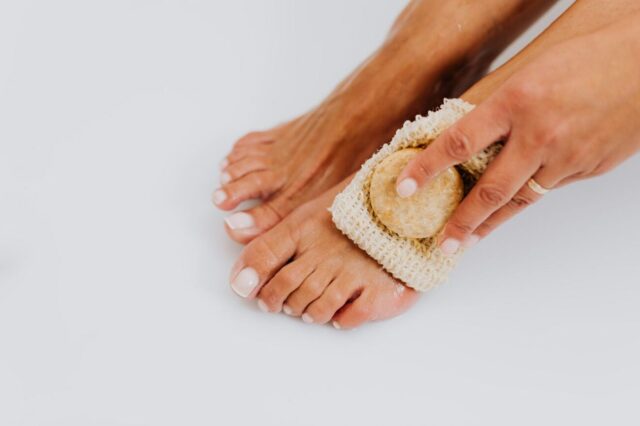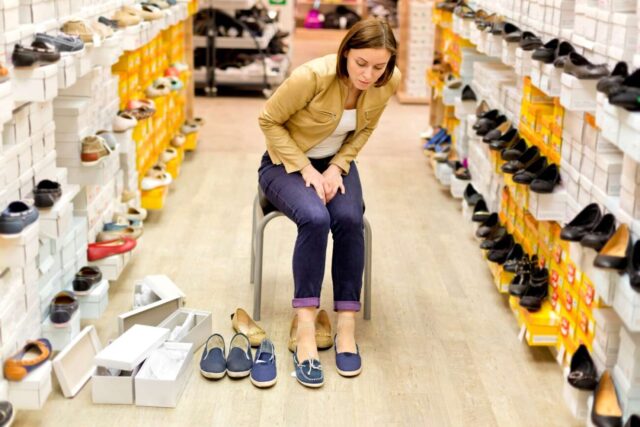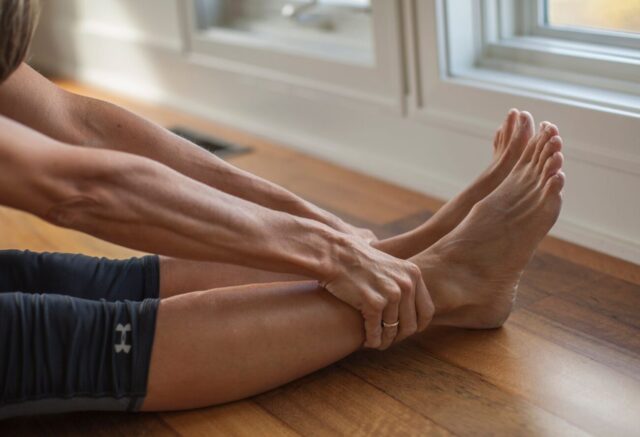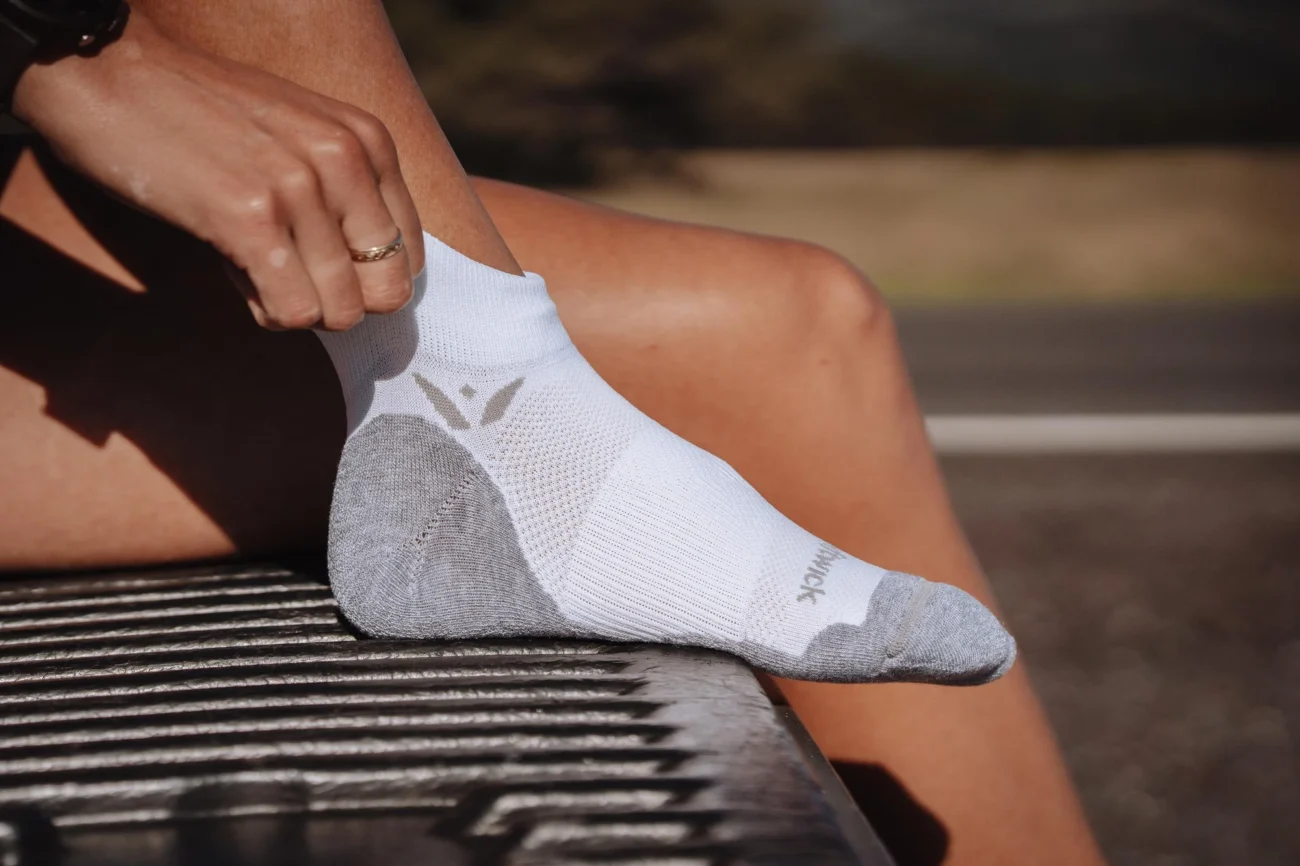
Your feet carry you through life, so it’s essential to care for them, no matter the season. Whether you’re wrapped up during the winter months or flaunting sandals in the summer, maintaining healthy feet is a year-round commitment.
Let’s explore nine expert tips to keep your feet in top shape all year long.
1. Moisturize Daily for Supple Skin
Keeping your feet moisturized is vital throughout the year. During winter, the harsh, dry air can lead to cracked heels and flaky skin, while in the summer, increased exposure can also dehydrate your feet.
To prevent these issues, make a habit of applying a good-quality foot cream every night before bed. Look for creams that contain different hydrating ingredients such as shea butter, coconut oil, or hyaluronic acid. Regular moisturization not only prevents dryness but also keeps the skin on your feet supple and helps to ward off calluses and other rough patches that might appear.
2. Choose the Right Footwear for Every Season
If you want to keep your summer runs sizzling, your choice in footwear should adapt not just for style but for health. Running in the summer months demands shoes that provide good ventilation to prevent excessive sweating, which can lead to athlete’s foot and other fungal infections.
Opt for lightweight, breathable running shoes that offer adequate support and cushioning. As seasons change, so should your shoes; in colder months, choose footwear with better insulation and waterproof qualities to protect against cold and moisture. Remember, the right shoe for the right season can drastically reduce your risk of foot ailments.

3. Support Your Soles ─ The Magic of Plantar Fasciitis Sandals
Foot issues are very common and those like plantar fasciitis can cause people debilitating pain and discomfort, particularly affecting the heel and arch of the foot. One surprisingly effective remedy is to wear plantar fasciitis sandals. These specially designed sandals help distribute your body weight more evenly, providing support where it’s needed most.
Not only do they help alleviate the pain associated with plantar fasciitis, but they also promote a healthier foot posture. When choosing these sandals, look for options that offer better arch support and a deep heel cup. Even if you don’t suffer from plantar fasciitis, these sandals can be a proactive choice to prevent foot problems before they start, making this tip a cornerstone of year-round foot care.
4. Regular Pedicures ─ Not Just for Looks
While pedicures are often seen as a cosmetic indulgence, they hold substantial benefits for foot health. Regular pedicures keep nails trimmed and clean, reduce the buildup of dead skin, and can help prevent nail infections. During a pedicure, the removal of calluses and dead skin also helps improve the appearance and comfort of your feet.
This is especially important in warmer months when you’re likely wearing open-toed shoes and more prone to dirt and bacterial infections. However, don’t disregard pedicures in the colder seasons; they serve as a preventive measure against the harsh conditions of winter.
5. Exercise Your Feet to Strengthen Them
Feet exercises are often overlooked in our regular fitness routines. Simple exercises like toe curls, ankle rotations, and arch lifts can significantly improve your foot health by enhancing blood circulation, increasing flexibility, and strengthening muscles.
These exercises are particularly beneficial if you spend a lot of time on your feet or wear high heels frequently. Integrating foot exercises into your daily routine can prevent injuries and conditions such as hammertoes and bunions. Also, strong feet help to stabilize your gait, improving your overall posture and alignment.

6. Soothe Your Feet With Regular Soaks
A foot soak is a great option for a relaxing and therapeutic addition to your foot care regimen. Warm water combined with Epsom salts, essential oils, or even just simple soap can help soothe sore muscles, reduce swelling, and alleviate pain from foot strain.
It’s a perfect end to a long day, particularly after you spend the day standing or engaging in strenuous activities. In the colder months, a warm soak can also help you better maintain moisture levels in your skin, preventing dryness and cracking.
For added benefits, after soaking, use a pumice stone to gently remove any remaining dead skin, then lock in moisture with your favorite foot cream.
7. Rotate Your Shoes Regularly
Wearing the same pair of shoes each day can lead to more moisture and bacteria, which can cause foot odor and increase the risk of fungal infections like athlete’s foot. To avoid this, it’s crucial to rotate between different pairs of shoes.
Also, rotating shoes helps them last longer and prevents uneven wear patterns, which can impact your foot health and walking posture. For those who exercise regularly, consider having a dedicated pair of workout shoes and rotating them as well to ensure maximum hygiene and performance.
8. Wear the Right Socks
Just as important as choosing the right shoes is selecting the right socks. When you wear socks that are too tight, it can restrict circulation, while those that are too loose can cause blisters.
Choose socks made from good, breathable materials like cotton or moisture-wicking fabrics, which help keep your feet dry and also reduce the risk of fungal infections. In the colder months, thermal socks can provide extra warmth while maintaining breathability. Plus, if you have specific foot issues, consider therapeutic socks designed to provide extra cushioning or support.

9. Regular Check-Ups with a Podiatrist
Last but certainly not least, regular appointments with a podiatrist can be another way to maintain foot health. A podiatrist can provide professional advice tailored to your specific needs, help manage foot issues such as bunions, hammertoes, or diabetic foot problems, and offer guidance on proper foot care techniques.
Annual or bi-annual check-ups can catch potential problems early before they become severe, ensuring your feet stay healthy and functional for years to come.
By integrating these nine tips into your daily and seasonal routines, you can ensure your feet are well-maintained and ready for anything life throws their way, no matter the season.
From choosing the right footwear to regular check-ups with a podiatrist, each step you take towards better foot care is a step towards a healthier, more comfortable life. So, don’t take your feet for granted—give them the attention they deserve, and they will continue to carry you forward with every step.







